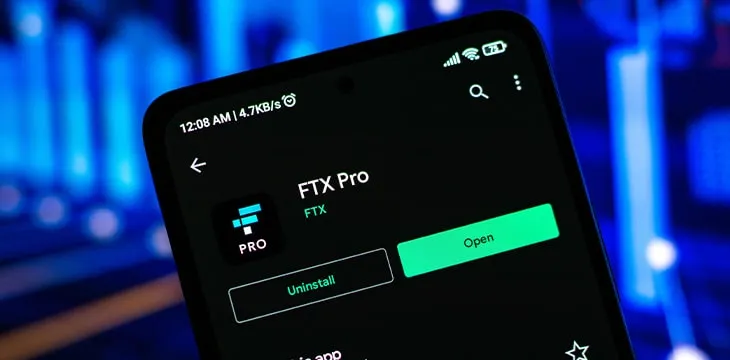|
Getting your Trinity Audio player ready...
|
The U.K.’s Financial Conduct Authority (FCA) has warned consumers that FTX is operating in the U.K. without local permission, putting another dent in its founder’s increasingly tarnished PR halo.
On September 16, the FCA issued a warning to consumers that it believes the FTX cryptocurrency exchange “may be providing financial services or products in the U.K. without our authorisation.” The FCA further warned that FTX “is not authorised by us and is targeting people in the U.K.,” adding that consumers would be “unlikely to get your money back if things go wrong.”
Three days later, SBF founder Sam Bankman-Fried (SBF) tweeted that “a scammer has been impersonating FTX in the U.K. by phone!” SBF advised customers not to “respond to any phone numbers” because “FTX will never call you by phone.”
An FTX spokesperson similarly told Bloomberg that “we believe that a scammer is impersonating FTX,” adding that the phone numbers listed in the FCA warning “are not from FTX and are listed as a crypto scam.” However, the Financial Times quoted a spokesperson conceding that the FTX.com domain cited in the FCA warning was indeed the company’s main platform.
FTX launched its European division last spring and announced last week that it had received regulatory approval from the Cyprus Securities and Exchange Commission (CySEC) “to operate as a Cyprus investment firm (CIF) allowing [FTX] to fully own the local investment firm it previously acquired.” But while this license grants FTX access to the European Economic Area, the post-Brexit U.K. is not a member of that group.
The FCA has previously issued similar warnings about other high-profile ‘crypto’ service providers, including Binance’s ongoing efforts to slip unnoticed into the U.K. market. Binance was an early investor in FTX but SBF bought out Binance’s stake in July 2021, suggesting at the time that Binance’s “less flexible or responsive” approach to regulatory concerns left regulators feeling “like they have no choice but to start bringing the hammer.”
Bon Voyager
In other FTX news, the exchange’s affiliated market-maker Alameda Research is planning to repay a $377 million debt to bankrupt crypto lender Voyager Digital, albeit at a hefty discount. According to a court filing this week, Alameda plans to return the roughly 6,500 BTC, 50,000 ETH along with other tokens it borrowed from Voyager in September 2021. In exchange, Voyager will return the tokens Alameda put up as collateral for the loans.
The tokens that Voyager will be getting back by September 30 are now worth a little over half their value at the time of the loan, thanks to the ongoing crypto winter that erased much of the artificially inflated value that pumped so many function-free tokens last year.
The collateral that Alameda put up primarily consists of FTX’s in-house token FTT as well as SRM, the token issued by the Serum decentralized exchange (which SBF founded in 2020). SRM tokens were worth nearly $12 apiece one year ago but currently trade at around 80 cents. FTT currently trades at around one-third of its September 2021 peak of around $80. (Perhaps not coincidentally, SBF was tweeting about FTT buybacks on Monday, while adding the butt-covering caveat: “NOT INVESTMENT ADVICE, ETC.”)
SBF made a public bid to acquire Voyager this July, which the lender ultimately rejected as a “lowball bid dressed up as a white knight rescue.” While media reports suggested SBF had pledged up to $485 million to help rescue Voyager, the troubled exchange rejected the offer as “nothing more than a liquidation of cryptocurrency on a basis that advantages Alameda/FTX.”
On Tuesday, the Wall Street Journal reported that Binance held a slight lead over FTX in the auction for Voyager’s remaining assets. Binance’s offer is said to be in the $50 million range, with FTX coming in slightly below that sum. Other bidders are also in the mix, and a hearing will be held in New York on September 29 to announce the winner.
Emotional rescue
SBF has made similar ‘white knight’ offers to other struggling crypto firms, some of which were accepted. Mainstream media has cited these bailouts to justify describing SBF as crypto’s John Pierpont Morgan, who famously used his own cash to prop up struggling New York banks during the so-called ‘Bankers’ Panic’ of 1907.
Last Friday, CNBC quoted SBF touting his wallet-readiness by saying “it was important that the industry get through this [market downturn] in one piece.” SBF warned that “real pain and real blowouts” were “not going to be good for regulation,” a front that has also felt the weight of SBF’s wallet.
SBF said FTX wasn’t “immune” to the negative sentiment afflicting the digital asset sector but claimed that his exchange was “a less retail-heavy platform,” with most of FTX’s volume coming from “fairly sophisticated” traders who moved “at least” $100,000/day.
That last point is worth remembering, given that SBF’s bailout offer to Voyager would have seen the latter’s retail customers reunited with their frozen funds via new accounts opened on FTX. Considering that the majority of retail traders lose money at the hands of more seasoned investors, it’s almost as if SBF planned to ‘rescue’ Voyager’s customers by serving them up as chum for FTX’s sophisticated sharks, including Alameda, which still accounts for a significant chunk of FTX’s volume.
Conjoined at the hip
The intertwined nature of FTX and Alameda has long been controversial, in part due to the fact that such coziness between an exchange and a market maker wouldn’t be tolerated outside of Cryptoville. When someone as ethically compromised as Binance boss Changpeng ‘CZ’ Zhao makes allusions to frontrunning at an unnamed exchange, it speaks volumes that SBF feels the need to deny it.
There’s also the fact that Alameda is the single largest recipient of Tether’s sketchy AF stablecoin USDT, which has long been suspected of artificially propping up BTC’s price. Of the $36.7 billion USDT that Alameda received before October 31, 2021, $30.1 billion was sent to FTX.
Last month, SBF denied a Bloomberg report that FTX and Alameda were merging their respective venture capital arms. That report indicated that Alameda’s VC division was being absorbed into FTX Ventures, although spokespeople claim that the two units are operating on an ‘arms-length’ capacity from each other as well as the exchange.
These days, SBF—who is estimated to own around 60% of FTX and up to 90% of Alameda—is quick to declare that he’s no longer involved in running Alameda, much like co-founder/co-CEO Sam Trabucco, who sailed off into the sunset in August (but retained an advisory role). Basically, everyone associated with Alameda is starting to resemble kids playing musical chairs, each one determined not to be the one left standing when the music stops.
Effective subterfuge
No profile of FTX/SBF is complete without the standard checklist of ‘aw, shucks, he’s just a big kid’ factors intended to blunt criticisms of SBF’s outsized reach and questionable relationships. There’s the tousled mop of hair, the fact that he sleeps on a bean-bag chair, plus the voice that suggests he and his FTX buddies just discovered a tank of helium.
Then there’s the ‘effective altruism’ angle, in which SBF gets to deflect criticism of the billions he’s made from his tangled web of companies because he’s going to give it all way. When? That’s unclear, but it’s definitely not now. The mantra is to just let SBF continue to build his cash mountain from the losses of traders endlessly speculating on this or that token (which may or may not be Ponzi schemes), because it’s all going to work out for everyone in the end.
FTX, like a lot of its competitors, tends to experience slowdowns or outright shutdowns during periods of market turmoil. The most recent example occurred this month, when the U.S. consumer price index report was released and traders began hammering their ‘sell’ buttons. Curiously, none of these exchanges ever suffer the same hiccups when market sentiment is positive and money is flowing in rather than out.
If SBF really wanted to burnish his crypto savior image, he’d take some of his outsized profits and plow them into boosting FTX’s technical infrastructure so that it could remain active even if every single one of its panicked customers chose to stampede for the exits. Because someday, maybe sooner than you think, they just might.
Follow CoinGeek’s Crypto Crime Cartel series, which delves into the stream of groups from BitMEX to Binance, Bitcoin.com, Blockstream, ShapeShift, Coinbase, Ripple,
Ethereum, FTX and Tether—who have co-opted the digital asset revolution and turned the industry into a minefield for naïve (and even experienced) players in the market.

 04-02-2025
04-02-2025 





